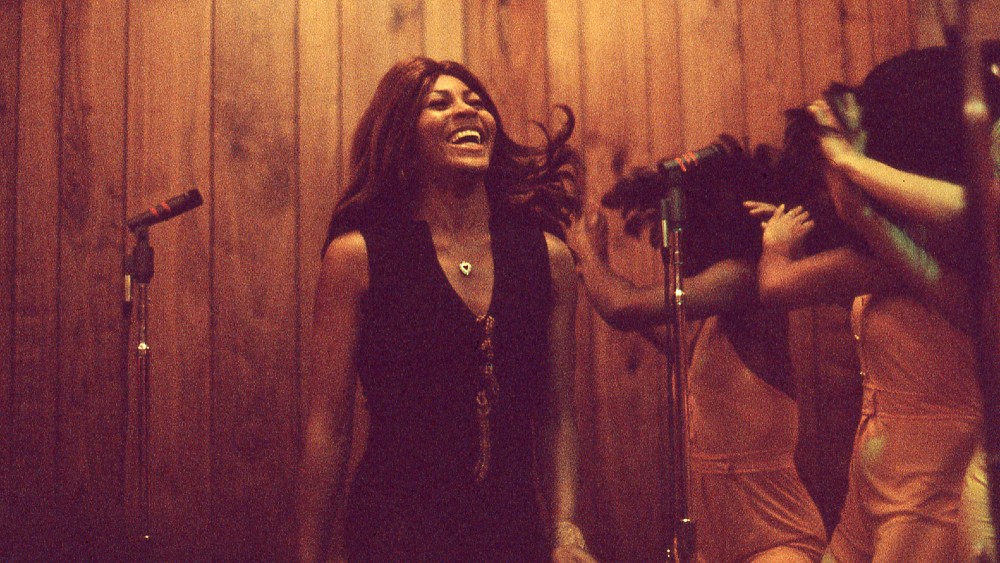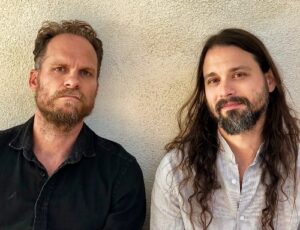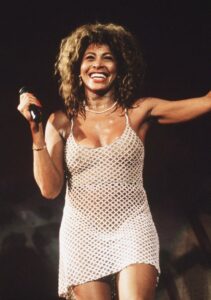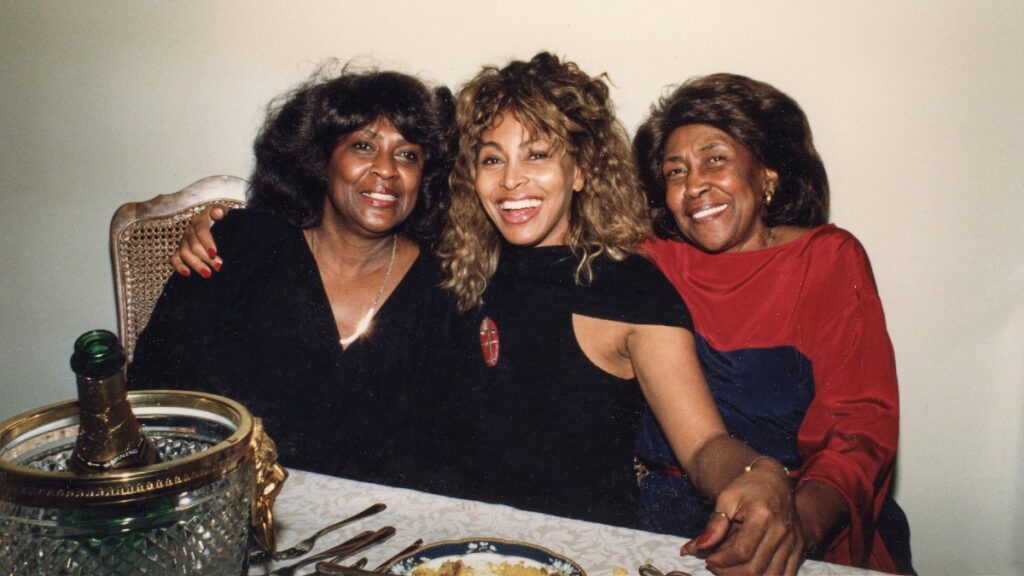
Film composer duo Danny Bensi and Saunder Jurriaans, SCL (Ozark, The Devil All The Time) lend their signature sound, which has been recognized for its unpredictability and uniqueness, to the HBO feature documentary, Tina. The film is an intimate look at the life and career of musical icon Tina Turner, from her meteoric rise to fame to dealing with the struggles of her personal and professional obstacles along the way.
Bensi, who was raised studying cello in Europe, and Jurriaans, a Seattle-based guitarist, made the transition from being band mates into the world of composing. They began their musical partnership with the suspenseful score of Martha Marcy May Marlene. It caught the attention of director Denis Villeneuve which led to their unsettling and sinister score for Enemy earning them “Best Musical Score” at the Canadian Screen Awards (2013). Their career took off from there, creating layered orchestral scoring for over 100 films and television shows.
With Tina, the objective in mind was to tell Turner’s story which was sometimes tragic and other times celebratory, through their music. After a decade of collaboration, Bensi and Jurriaans say their ultimate goal is to create a score that not only illustrates the film, but can also stand alone as a lingering memorable melody.
Below The Line spoke with Bensi and Jurriaans from their respective home recording studios in Los Angeles about creating the visceral scores that accompany the emotional interview segments in Tina.

BTL: Was the music of Tina Turner a factor when composing the score?
Danny Bensi: We didn’t really pay attention to the song that she sings from her repertoire. That didn’t inform our score. Many times we have thought about dovetailing the music out of a song we’re just hearing but it never works. I would say the hardest thing was coming up with the textures that we ended up using for her and the reasons why we used those textures.
Saunder Jurriaans: Tina Turner is such a massive icon and her story is massive; everything about her is so incredible and huge. That was the challenge because we could’ve gone for a big orchestra to show how grandiose she is but we kind of went the opposite way.
BTL: Can you describe what those textures were and how they illustrated the scenes in the documentary?
Bensi: The clips and the songs that they did use, whenever you see her on stage, it’s her most emotive, expressive force of nature that she is. I think that correlated into the way we played a lot of the instruments. Saunder and I played all the instruments for this score. For instance there’s a few (music) cues where Saunder is just playing simple upright piano that’s got a dampener on it, this cushiony thing that makes it sound muffled and very sort of intimate and lonely. The way I actually played the cello was with force and grit and full expression like Tina and trying to emulate that. You can play the cello icy cold or super warm; make it sound distorted or wispy and floaty and just apply that to the scene. There are bigger pieces with lots of woodwind, clarinet, flutes and a lot of string pizzicato where everybody is really playing with all their heart and emotion just like her. That really is the seed which allowed us to write the score this way. Each instrument does the heavy lifting of the emotion, just like Tina. In 10 years of scoring we’ve always tried to do that. What can we do with one instrument to emulate what we’re seeing on the screen.
BTL: Would you say that you veered from your signature sound with Tina?
Jurriaans: We’re known for Ozark and a minimal, dark, grimy, gritty sound but honestly we have done so much more than that and Tina is a good example of something completely different. The minimalism is something we like to revisit but in Tina there are moments where the score will blossom and become busy like when she’s leaving Ike. We want music that stands out but doesn’t get in the way of the story.

BTL: How do you begin to organize which music cues go with which scenes?
Jurriaans: Dan and I are very non-methodical in the beginning. We approach every film in a visceral way. We’ve worked with (directors) T.J. (Martin) and Dan (Lindsay) before and they’re very supportive of the way we work. We want to spend at least three weeks by ourselves with the film responding to scenes that inspire us musically and doing exactly what we want to do without paying attention to any direction that they might have. Then we get into the more methodical stuff which is then spreading out these themes and textures of the film.
BTL: Were you interested in speaking with Tina Turner or the people close to her for inspiration?
Jurriaans: There was enough in the film even at a rough state where we could get a real sense of who she was. They did such a good job interviewing her and finding the footage that was powerful and really showed you who she was.
Bensi: We asked a lot of questions of T.J. and Dan. I didn’t feel compelled to speak to Tina but I’m a fan. They showed that she was not just this incredible perfect person but also her pain that she’d gone through and we drew on that a lot. In those moments she explains perfectly clearly what happened to her and how it made her feel. I really felt the connection to Tina.
BTL: How did the instruments musically illustrate Tina’s story?
Bensi: It was towards the beginning of the film which was explaining who Tina was when she was a child and how she felt. While we’re composing we’re thinking about, here’s this young girl who basically can be stuck in that little world for the rest of her life but she seems to know that she’s gonna leave at some point. We know as an audience that she’s going to get out of there so we created this sort of dreamy impressionist landscape head-in-the-clouds piano tickling with a very earnest feel to it. The single clarinet and the single cello emulate that she knows she’s gonna take off and migrate away like a bird. That’s how we wrote the whole first part of the film. It doesn’t get so technical that we say, ‘change the music here when she says that.’ We try to make pieces that stand on their own and as the film continues you see how those pieces are returning. I think the most successful scores are when the audience starts to realize melodies coming back and in your subconscious you’re paying into the film even more. You’re being drawn in.
Jurriaans: A lot of the bigger turning points in the film are pieces that could very much stand on their own. We almost get tripped up sometimes because we want to treat every single cue in the film as a very precious piece of music. We want to get to that emotional place.

BTL: What were the moments in the film that you were most excited to underscore?
Jurriaans: We had a lot of fun with her meeting her husband Erwin [Bach]. I think we wrote two or three pieces for that which were all very beautiful. It was only two minutes of music and it was just so innocent and pure to express them falling in love. Here they were in Switzerland in that house and we had this huge orchestra but the directors wanted us to strip it down. With her story even the most triumphant powerful moments in her life are laced with this darkness that she’s going through. We never just went full on warm, beautiful purposed music.
Bensi: (The question was) can that beautiful melody of them being together somehow hark back to the beginning of the film that she’s going to get out of Nutbush some day and have a nice normal relationship.
BTL: Were you thinking the opposite way when her son Craig Turner is discussing his mother Tina getting beaten up by his father Ike?
Bensi: That was really one of the more tonal ones with a droning quality. That was the solitary piano and a lot of prayer bowls which we go into later when she (Tina) does her Buddhist stuff that give that feeling of tension and you can’t get out; you’re just stuck.
BTL: The two of you never set out to become composers. How does scoring express you musically in a different way from when you were writing songs for your band?
Jurriaans: Our band was very weird, very psychedelic art rock or hard rock three-piece thing. A lot of our recording kind of really gave birth to how Danny and I went with scoring. We had songs but they were massive kind of epic journeys of music with strings layered on top of each other with orchestras. So we were kind of doing a sort of scoring even when we were in a band. What changed is our technical knowledge like Pro Tools and organization which is a huge part of scoring films.
Bensi: The reason why we do music as composers is to try to move somebody as much as we were moved when we were kids. It’s an amazing feeling to realize that and we didn’t become composers until about 10 years ago. Before we were in bands and things like that. So when we can it’s like can we have the small opportunity to make something so beautiful that might reach somebody, together with the film. We never want to look at a scene and go, ‘good enough, sounds pretty good.’ We want to love it all and almost listen to it without the film. If you can, what a nice precious thing.
Tina debuts March 27 from 8pm to 10pm (both Eastern and Pacific) on HBO and will be available to stream on HBO Max. All photos courtesy HBO. All photographs by Rhonda Graam.





